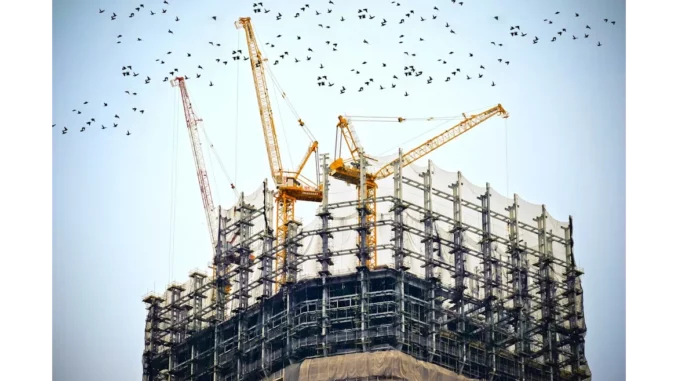
In the rapidly advancing sphere of construction, the rainscreen cladding market stands as a testament to ongoing transformation. Regulatory shifts and technological advancements are reshaping the industry’s landscape, placing it at a pivotal moment. To gain a deeper understanding of these changes, I engaged in a discussion with Edward Sullivan, a distinguished market analyst and consultant. He offered invaluable perspectives on the recent findings from Report Ocean’s exhaustive market research report on the rainscreen cladding sector.
Focus360 Energy: property compliance services – pre-planning to post-construction. Learn more.
Edward Sullivan began by highlighting the breadth and depth of Report Ocean’s latest market research. The report, an extensive analysis encompassing over 150 countries, scrutinises more than 100,000 published and forthcoming reports annually. Employing robust methodologies such as S.W.O.T. and P.E.S.T.E.L. analysis, along with regression analysis, the report provides a forecast of market growth. It examines industry regulations, policies, and anticipated advancements, offering a comprehensive view of the current market dynamics. This level of detail is crucial for stakeholders aiming to navigate and capitalise on the ever-changing market conditions.
Regulatory changes have undeniably left a significant imprint on the rainscreen cladding market. In Europe, stringent construction guidelines have accelerated the adoption of these systems. Noteworthy legislative acts such as the Energy Policy Act of 2005 and the International Energy Conservation Code of 2006 have markedly increased the utilisation of rainscreen cladding in European architecture. These regulations are instrumental in enhancing energy efficiency, structural integrity, and the aesthetic appeal of buildings, thereby driving market demand.
The growth trajectory of the rainscreen cladding market is equally compelling. Valued at approximately USD 9.43 billion in 2018, the market is projected to expand at a robust rate of over 7.1% between 2019 and 2026. A primary driver of this growth is the escalating demand for energy-efficient buildings. Rainscreen cladding systems offer superior thermal insulation and reduced air leakage, making them a favoured option for both new constructions and refurbishments. Furthermore, the global surge in residential and non-residential construction activities fuels this demand. According to Statista, global construction spending was USD 11.4 trillion in 2018, with projections reaching USD 14 trillion by 2025.
Regional variations play a crucial role in the market’s dynamics. Europe currently dominates the market share, propelled by the resurgence in residential and commercial applications and stringent construction standards. The rising demand for terracotta and composite materials in the UK, for instance, further stimulates market growth. Meanwhile, North America is poised for significant expansion, driven by government initiatives for infrastructure and commercial projects, particularly in the United States. These regional trends underscore the diverse opportunities present in the rainscreen cladding market.
In this promising landscape, the market boasts a competitive roster of key players. Companies such as Kingspan Insulation (UK), SIKA (Switzerland), and Rockwool International A/S (Denmark) are at the forefront, continually innovating to offer enhanced product offerings and maintain their market positions. Advancements in composite materials and high-pressure laminates (HPL) are notable trends, contributing to improved aesthetics, durability, and performance of buildings.
Emerging trends and opportunities further underscore the market’s dynamic nature. One significant trend is the integration of smart technologies with rainscreen cladding systems. The use of sensors to monitor cladding performance in real-time ensures optimal insulation and structural integrity. Additionally, there is a growing emphasis on sustainable and eco-friendly materials, aligning with global efforts to reduce carbon footprints. Companies that innovate in these areas are poised to capitalise on substantial growth prospects.
However, the market is not without its challenges. High initial costs of rainscreen cladding systems can be a deterrent, particularly for smaller construction projects. Additionally, navigating the complex regulatory landscape can be daunting for new entrants. Nonetheless, with strategic planning and a thorough understanding of local regulations, these challenges can be mitigated.
For stakeholders aiming to thrive in this evolving market, continuous innovation and a focus on sustainability are paramount. Investing in research and development to create more cost-effective and environmentally friendly solutions will be vital. Staying abreast of regulatory changes and market trends through comprehensive reports, like those from Report Ocean, can provide invaluable insights for informed strategic planning and decision-making.
As the rainscreen cladding market continues to evolve, embracing regulatory changes and fostering innovation will be key for industry participants. Insights from comprehensive market research reports offer a roadmap for navigating these transitions and seizing emerging opportunities in this vibrant sector.


Be the first to comment